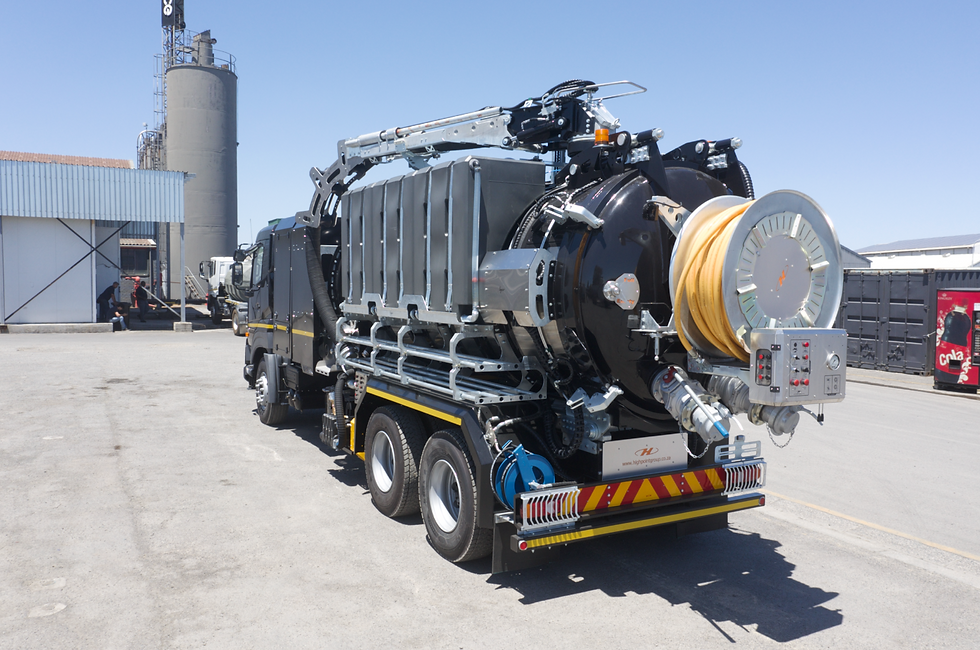GIS Mapping: Beyond Drainage Systems to Comprehensive Asset Management
- Camjet Pty Ltd

- Aug 27, 2024
- 3 min read
Updated: Sep 26
In the industry of infrastructure management, Geographic Information Systems -GIS mapping services have become indispensable tools, offering invaluable insights into the spatial data that underpins our modern world. While traditionally associated with mapping drainage systems and other utilities, GIS technology possesses the versatility to capture a wide array of assets, from electricity grids to transportation networks.

GIS Mapping is a powerful tool that can visualize a wide range of spatial data beyond just pipes and drains. Here are some examples of what GIS can visualize:
Illuminating the Grid: GIS Mapping Capturing Electricity Infrastructure
One area where GIS mapping shines is in capturing electricity infrastructure. From power lines and substations to transformers and distribution networks, GIS technology offers a detailed and comprehensive visualization of the electrical grid. By overlaying spatial data with information on voltage, capacity, and load distribution, GIS mapping enables utilities to optimize operations, identify vulnerabilities, and plan for future expansion with precision and efficiency.
Navigating the Network: Mapping Transportation Infrastructure
But the scope of GIS mapping doesn't end there. Transportation infrastructure, including roads, railways, and airports, can also be meticulously mapped and analyzed using GIS technology. By integrating data on traffic patterns, infrastructure condition, and accessibility, GIS mapping helps transportation agencies make informed decisions regarding maintenance, route planning, and infrastructure investment, ultimately enhancing safety and efficiency for commuters and cargo alike.
Asset Management: Maximizing Value, Minimizing Risk
At its core, GIS mapping serves as a powerful tool for asset management, enabling organizations to track, monitor, and optimize their infrastructure assets with precision and foresight. By centralizing spatial data and integrating it with asset information such as condition, maintenance history, and depreciation, GIS mapping facilitates proactive asset management strategies that maximize value and minimize risk. Whether it's prioritizing maintenance activities, planning for upgrades, or optimizing asset utilization, GIS technology empowers organizations to make data-driven decisions that drive efficiency and sustainability.
Land Use/Land Cover: GIS can display and analyze information about how land is being used, whether it's urban, agricultural, forested, etc. This is crucial for urban planning, environmental management, and conservation efforts.
Infrastructure: Beyond pipes and drains, GIS can map and manage various types of infrastructure such as roads, bridges, power lines, communication networks, and public transportation systems.
Demographics: GIS can visualize demographic data such as population density, age distribution, income levels, education levels, and ethnicity. This information is valuable for social and economic planning, including targeting services and resources effectively.
Environmental Features: GIS can display natural features like rivers, lakes, mountains, forests, and wetlands. It can also show environmental data such as pollution levels, air quality, biodiversity hotspots, and habitat suitability.
Hazards and Risks: GIS can map areas prone to natural hazards such as floods, earthquakes, wildfires, and landslides. It can also analyze risk factors and help in disaster preparedness and response planning.
Property and Real Estate: GIS can manage information about property boundaries, ownership, zoning regulations, land values, and real estate developments. It's useful for urban planning, real estate management, and taxation purposes.
Transportation: GIS can visualize transportation networks including roads, highways, railways, airports, and ports. It can analyze traffic patterns, optimize routes, and plan for transportation infrastructure improvements.
Utility Networks: Besides pipes and drains, GIS can map other utility networks such as electricity, gas, and telecommunications. It helps in infrastructure management, maintenance planning, and service provision.
Overall, GIS is a versatile tool that can visualize and analyze spatial data across various domains, making it indispensable for decision-making in numerous fields.




Comments